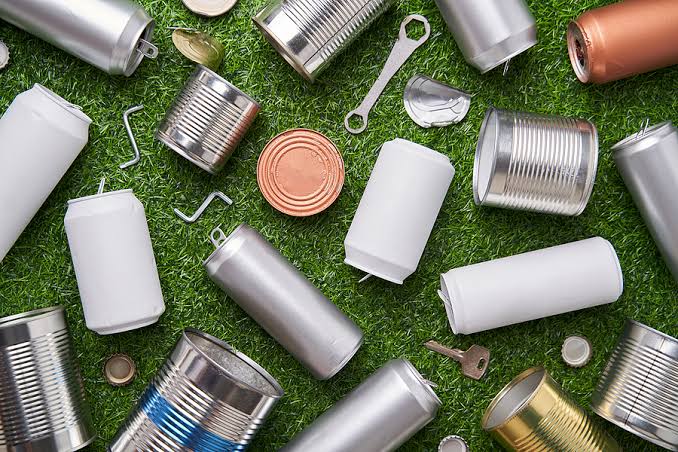Table of Contents
- Introduction to Residential Metal Recycling
- Economic Benefits of Metal Recycling
- Environmental Advantages
- Types of Metals Commonly Recycled
- Steps for Setting Up a Home Metal Recycling System
- Challenges and How to Overcome Them
- Community Engagement in Metal Recycling
- Conclusion
Introduction to Residential Metal Recycling
Recycling metal at home is not only accessible but also a highly effective way to contribute to environmental sustainability. The process involves collecting and sorting metal waste from household items, such as aluminum cans, old appliances, and even small electronics, and delivering them to recycling centers. Engaging in this minor practice can make a significant difference by reducing the amount of trash that is disposed of in landfills and encouraging the preservation of resources. If you’re new to the concept, residential scrap metal recycling services provide a convenient and efficient way to recycle metals without hassle, ensuring they are processed correctly and reused effectively.
Economic Benefits of Metal Recycling
One primary economic advantage of recycling metal is reducing manufacturing costs. Using recycled metals instead of raw materials to produce new products is often significantly cheaper. This cost-saving can translate into lower consumer prices and increased business profitability, making it a win-win scenario. The recycling industry also creates numerous job opportunities, contributing to local economies. Whether through collection, sorting, or processing, the recycling industry is a robust sector that provides stable employment for many individuals.
Environmental Advantages
Recycling metal offers numerous environmental benefits that should be noticed. Traditional mining and ore extraction processes can wreak havoc on ecosystems, causing soil erosion, deforestation, and water contamination. By recycling metals, we can decrease the demand for these destructive practices, mitigating their negative environmental impacts. Additionally, recycling metals significantly reduces greenhouse gas emissions and saves energy. One ton of steel recycling conserves 2,500 pounds of iron ore, 1,400 pounds of coal, and 120 pounds of limestone, according to research findings. The significant conservation of resources underscores the crucial role of recycling in protecting the environment.
Types of Metals Commonly Recycled
Various metals are commonly recycled, each offering unique properties and uses. Some of the most frequently recycled metals include:
- Aluminum: Found in beverage cans, foils and some kitchen utensils. Aluminum recycling is vital since the energy needed to produce new aluminum from raw materials is only 5% of what is used in the process.
- Steel: Steel is used in cans, appliances and construction materials. It is one of the most recycled materials worldwide, and recycling steel helps to conserve energy and reduce carbon emissions.
- Copper: Present in electrical wiring, plumbing pipes and electronic devices. Copper retains its quality when recycled, making it a valuable and sustainable material for countless applications.
- Brass: Often used in fixtures, fittings and musical instruments. Recycling brass conserves zinc and copper, its primary materials.
- Lead: Commonly found in batteries and some pipes. Recycling lead helps to prevent its toxic properties from contaminating soil and water.
Steps for Setting Up a Home Metal Recycling System
Setting up a home metal recycling system is straightforward and highly beneficial. Here are the steps you can follow:
- Identify Recyclables: Determine which metal items in your home can be recycled. Items include soda cans, old electronics and metal food containers.
- Sort and Store: Separate metals by type and store them in designated bins or containers. Having separate bins helps in easy sorting and avoids contamination.
- Clean Items: Rinse metal items to remove food residue and other contaminants. Recycling facilities are more likely to accept clean products.
- Deliver to Recycling Centers: Take your sorted metals to a local recycling center or arrange curbside pickup. Many communities have dedicated recycling days or centers for easy drop-off.
Challenges and How to Overcome Them
Despite the benefits, there are challenges in home metal recycling. Here are some ways to overcome them:
- Collection: Gathering enough metal waste can be difficult for individuals. Collaborating with neighbors or community groups to pool recyclable materials is a good solution, creating a collective recycling effort.
- Transportation: Transporting heavy metal items to recycling centers can be cumbersome. If this is challenging, opt for curbside pickup services or invest in proper storage bins and a hand truck to make transportation easier.
- Contamination: Mixed or dirty recyclables can be rejected. Properly clean and sort recyclables to avoid contamination before taking them to the recycling center.
Community Engagement in Metal Recycling
Encouraging community involvement in metal recycling can significantly amplify its effects. Neighborhood initiatives and local events can go a long way in raising awareness and promoting collective action. Schools and community centers can serve as educational hubs, teaching younger generations the importance of recycling. By incorporating local businesses, organizations, and schools, communities can develop vital recycling programs that promote a sense of community responsibility towards the environment.
Conclusion
Recycling metal at home is a practical and rewarding way to contribute to economic and environmental sustainability. The benefits extend beyond individual households, as it helps to conserve resources, reduce waste, and create economic opportunities. Understanding the financial and ecological benefits and the prevalent types of recycled metal can significantly impact people and communities. Simple steps like sorting and cleaning recyclables and engaging with community initiatives can all make a difference in creating a greener future for everyone.

